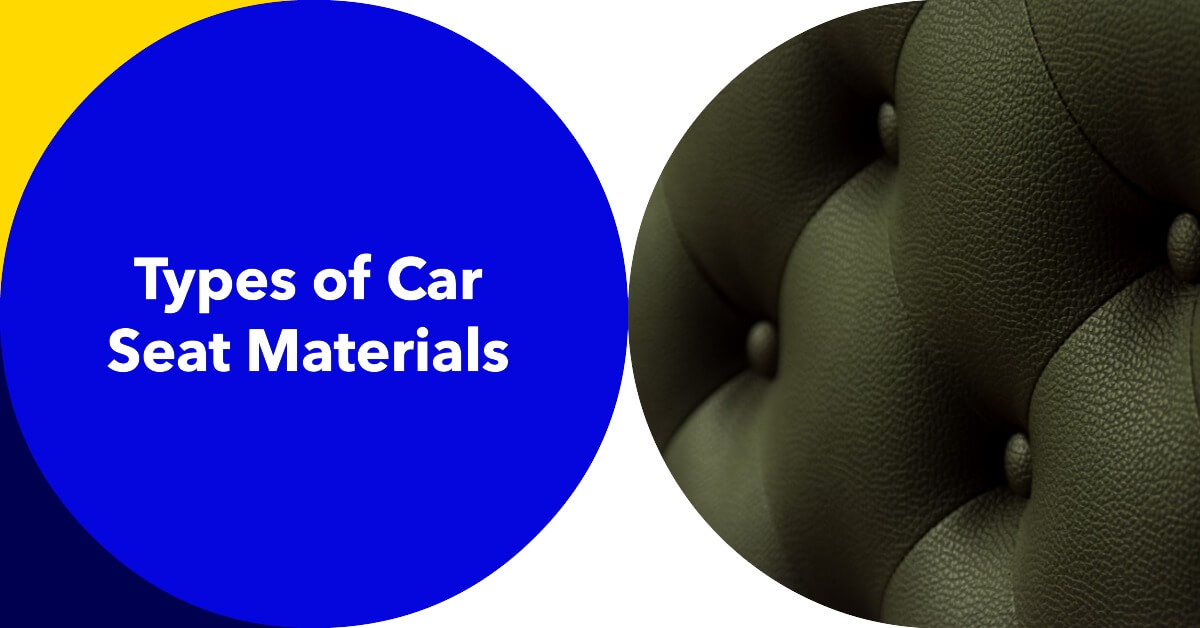When it comes to car seats, we often focus on their design, safety features, and comfort. But have you ever stopped to think about the materials that make up these essential components of our vehicles? Car seat materials play a crucial role in determining not only the aesthetics but also the durability and overall quality of the seats. In this article, we will explore the different types of car seat materials commonly used in the automotive industry.
Table of Contents
Toggle1. Leather: Timeless Elegance and Luxury
One of the most coveted materials for car seats is leather, known for its timeless elegance and luxurious feel. Leather seats exude sophistication and can instantly elevate the interior of any vehicle. They are typically made from high-quality hides, which are carefully treated and processed to enhance their durability and softness.
Leather car seats offer a premium look and feel, providing a touch of class to the overall driving experience. However, it’s important to note that leather requires proper care and maintenance to keep it in pristine condition. Regular cleaning and conditioning are necessary to prevent drying and cracking, especially in extreme weather conditions.
2. Fabric: Versatile and Comfortable
Fabric car seats are a popular choice due to their versatility and comfort. They come in various colors, patterns, and textures, allowing for a wide range of design options to suit different tastes and preferences. Fabric seats are often made from durable materials like nylon, polyester, or a blend of both.
One of the advantages of fabric seats is their breathability, making them suitable for hot climates. They are also generally easier to clean and maintain compared to leather seats. However, fabric seats may be more prone to staining and can absorb odors more easily. To mitigate these issues, some manufacturers treat the fabric with stain-resistant coatings or offer removable and washable seat covers.
3. Vinyl: Practicality and Durability
Vinyl car seats strike a balance between affordability, practicality, and durability. Vinyl is a synthetic material that mimics the look and feel of leather but at a lower cost. It is often used in budget-friendly or entry-level car models.
Vinyl seats are known for their resistance to spills, stains, and fading, making them an excellent choice for families with young children or for those who frequently transport pets. They are relatively easy to clean and maintain, requiring less attention than leather or fabric seats. However, one downside of vinyl is that it can become hot and sticky in warmer climates.
4. Suede: Luxurious Comfort and Style
Suede car seats offer a luxurious and stylish option for car owners who seek a unique and plush interior. Suede is a type of leather with a napped finish, giving it a velvety texture. It is often used as an accent material on specific areas of car seats, such as seat inserts or trim.
Suede seats provide a high level of comfort, as they are soft and cozy to the touch. However, it’s important to note that suede requires delicate care to maintain its appearance. It is more susceptible to staining and requires specialized cleaning products and techniques. Additionally, prolonged exposure to moisture can damage suede, so it’s essential to keep it dry.
5. Faux Leather: A Cruelty-Free Alternative
For individuals who prefer an ethical and cruelty-free option, faux leather car seats are an excellent choice. Also known as synthetic leather or pleather, faux leather is made from artificial materials like polyurethane (PU) or polyvinyl chloride (PVC).
Faux leather seats offer a similar look and feel to genuine leather while being more affordable and easier to maintain. They are resistant to stains and do not require extensive care or conditioning. Faux leather also has the advantage of being more resistant to cracking and fading compared to real leather. However, it may not offer the same level of breathability as genuine leather or fabric.
Conclusion
The choice of car seat material is a crucial consideration when selecting the perfect seats for your vehicle. Leather, fabric, vinyl, suede, and faux leather all have their unique characteristics and appeal. Whether you prioritize luxury, comfort, durability, or ethical considerations, there is a car seat material that suits your needs.
Remember to weigh the pros and cons of each material and consider factors such as climate, maintenance requirements, and personal preferences when making your decision. By selecting the right car seat material, you can enhance your driving experience and enjoy the comfort and style that aligns with your lifestyle.
So, next time you step into a car, take a moment to appreciate the craftsmanship and thoughtfulness that goes into the choice of materials used in your car seats. It’s not just about sitting down; it’s about the journey you take, and the material beneath you can make all the difference.
























